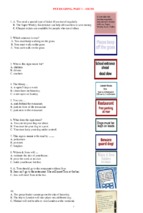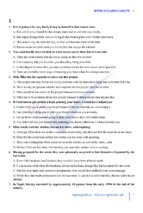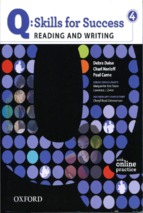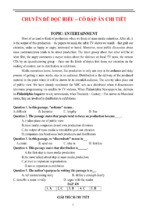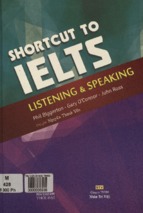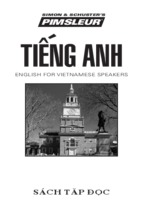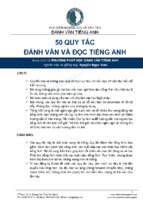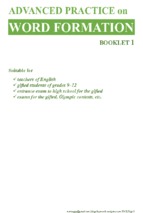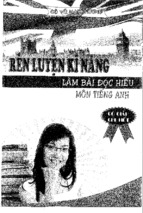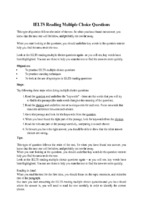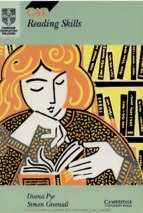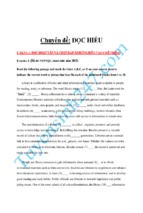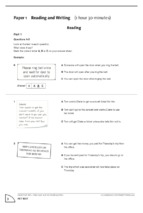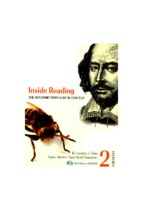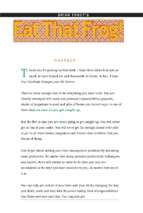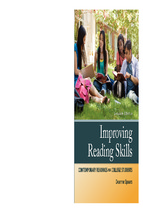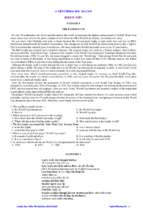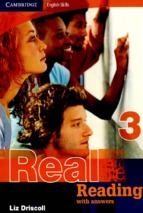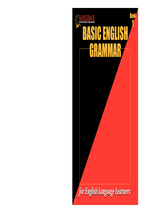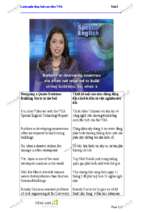GROUP 1: Vu To Uyen
Nguyen Thi Van
Chu Thi Thu Trang
Nguyen Thi Thuy Linh
Do Minh Thuy
1. DISCOURSE COMMUNITIES (Nguyen Thi Thuy Linh)
1.1. Discourse community
1.1.1. Definition:
A discourse community is a group of people who share a set of discourses,
understood as basic values and assumptions, and ways of communicating about those
goals. Linguist John Swales defined discourse communities as "groups that have goals or
purposes, and use communication to achieve these goals
1.1.2. A Conceptualization of Discourse Community
- A discourse community has a broadly agreed set of common public goals
A group of teachers has goals to teach students and help them move forward in
life. A group of cheerleaders has goals to entertain spectators and encourage them to
support the team for which they cheer. A group of pilots has goals to fly planes safely
from one place to the next and get passengers safely from one destination to the next. A
group of vacationers has common goals to get away from everyday responsibilities, to
have fun, experience new things, and/or to relax.
- A discourse community has mechanisms of intercommunication among their members.
We talk on the phone (phone being the mechanism of intercommunication), we
text, we write blogs or papers, we send and reply to emails for everyone in a community,
we have meetings and gatherings in short, every form of communication that facilitates
the “inter” part of intercommunication fits the bill here.
- A discourse community uses its participatory mechanisms primarily to provide
information and feedback. Most of the things that are listed in “mechanisms” above are
also part of this aspect of a discourse community. For example, a blog is often used for
feedback, as is email, meetings, etc. Other writings, like a newsletter or FAQs webpage,
would also be used for information.
- A discourse community utilizes and hence possesses one or more genres in the
communicative furtherance of its aims.
“Genre” is the word that might cause confusion here, but it simply refers to a text
—any text. Thus, it is possible that the genre of a discourse community might be chalk
drawings on a sidewalk or graffiti. More commonly, though, discourse communities, like
the ones you’ll be researching, possess and employ more traditional genres in the
communication of their aims websites, magazine articles, journal articles, blogs, etc.
- In addition to owning genres, a discourse community has acquired some specific lexis.
This simply refers to the jargon specific and often unique to a community but also
required by the members of that community for intercommunication. Artists, for
example, have a specific lexis used to explain tools, techniques, and mediums. Cyclists
have a specific lexis that refers to riding techniques, bicycle parts, and
equipment. Biologists have a different lexis from Marine Biologists, but each community
has its own lexis.
- A discourse community has a threshold level of members with a suitable degree of
relevant content and discoursal expertise.
In a discourse community, members often come into the community as novices
and “leave by death or other less involuntary ways” (Swales 27). I’m not sure of Swales
limited methods for leaving a community, but it is true that they change and evolve. It is
also true that a community takes in beginners; thus, there has to be a ratio of beginners to
experts for the community to exist and continue.
- Importance of discourse community:
+ helps you write in situations where community have specific language and goals of
writing
+ determine what is the best method to approach rhetorical situation
+ guide your writing
+ Understand the common goals of your community and plan your writing to match those
goals
+ Choose the genre that is common within your discourse community
+ Understand your audience: presupposition, community specifics terms and saying
+ Get revision by experts if possible
2. Example of a Discourse Community
About Obeysity, we find out a greta deal of information to help us better understand the
topic. What including how body mass index and waist size are used by physicians to
determine obeysity; who and how many, are affected by obeysity as well as other
information such as possible causes and varied ways to avoid obesity.
EX:
- Biologists and physicians may share their perspective on causes and ways to address
obesity. They use scientific and medical terminology that are not generally familiar to the
public but that provide useful methods for them to communicate to each other easily,
effectively and precisely
- Politicians and others (government) focus on law governing the use of transfat or
requiring calories to be posted at fastfood establishments. While they use scientific da ta
in suppor, their language about those may be more familiar to others who create and read
laws, their communication may appear in government publications and trade journals
- Patients and activists speak more colloqial about their experiences. Their mode of
communication may be narrative and full of details about their experiences dealing with
obesity. They seek to include examples they can inspire the general public to
betterunderstand their day-to-day lives.
ð
Its important to note that within each of these groups views may also vary, so not
all patients or lawmakers see eye-to-eye through they use their particular groups’
language and means of communcation to provide these perspectives
ð
Once we identify the communities, we can begin to analyze the relevance,
credibility of the views through their support. Interview, oponion pieces, articles may
appear in more widely circulated sources, such as TV or radio, interview, blog or in online
forums. A tweet promoting an unsubstatiated rumor may be more well-known than a 10year research study. The genre and location of a source may be importance factors to
consider in determining how the views noted there.
2. LANGUAGE AS SOCIAL AND LOCAL PRACTICE (Chu Thi Thu Trang)
By taking each of these three elements – language, locality and practice and
exploring how they relate to each other, in this presentation, we open up new ways of
thinking about language. Language is the most important aspect in the life of all beings.
2.1. Definition
- Language:
We use language to express inner thoughts and emotions, make sense of complex
and abstract thought, to learn to communicate with others, to fulfill our wants and needs,
as well as to establish rules and maintain our culture.
ð
Language can be defined as verbal, physical, biologically innate, and a basic form
of communication.
Other definitions:
- Behaviourists often define language as a learned behaviour involving a stimulus and a
response.
(Ormrod, 1995)
- Often times they will refer to language as verbal behaviour, which is language that
includes gestures and body movements as well as spoken word.
(Pierce & Eplin, 1999)
- Social practice:
In the framework of the current revival of Wittgenstein’s later philosophy as well
as American pragmatism, social practices are seen as determining the conceptual content
of our beliefs.
- Local practice:
Language as a Local Practice draws on a variety of contexts of language use, from
bank machines to postcards, urban graffiti to mission statements, suggesting that rather
than thinking in terms of language use in context, we need to consider how language,
space and place are related, how language creates the contexts where it is used, how
languages are the products of socially located activities and how they are part of the
action.
2.2. Language as social and local practice Analysis
a. Language as social practice
- Three conceptions of social practices are considered:
(1) social practices as being reducible to social behaviour;
(2) social norms as constituting some sort of a link between physical and intentional states
because the normative sphere has a wider scope than the conceptual sphere;
(3) the self-sufficiency of social practices in the sense that the normative and the
conceptual sphere are identical and selfcontained.
- Language as social practice, or, what we do in, with and through language. We must
answer these questions:
· What is the social context here?
· What social goals are being achieved by the participants?
· What are they learning from the interaction?
· What are they able to do through language?
b. Language as local practice
Language as a Local Practice addresses questions of language, locality and practice
as a way of moving forward in our understanding of how language operates as an
integrated social and spatial activity.
To talk of language as local practice might appear to invoke nothing more than the
sociolinguistic truism that people use languages in particular contexts. This book, by
contrast, approaches the issue from a different perspective: the idea that languages are
systems of communication that are used by people in different contexts is challenged in
favour of a view of language as a local practice whereby languages are a product of the
deeply social and cultural activities in which people engage.
Ex: The academic discourse community of students and academics also interact
with the wider speech community of the town or city in which the academic situation is
located.
Ex: What we do with language within different institutions – churches, schools,
hospitals – for example, depends on our reading of these physical, institutional, social and
cultural spaces. We may kneel and pray, stand and sing, direct classroom activity, write on
the margins of a textbook, translate between patient and doctor, ask when a cut hand
might get seen to, or spray-paint the back wall; and as we do so, we remake the language,
and the space in which this happens.
3. DISCOURSE AND GENDER (Vu To Uyen)
3.1 Definition
Gender
- defined by routine, repeated acts according to historical and socio – cultural norms
(Weatherfall 2002)
- the state of being male or female, typically used with reference to social and cultural
differences rather than biological ones (Oxford online dictionary)
- > Gender includes masculine (male) and femininity (female)
Discourse and gender
- One field of discourse aims to analyze how men and women use language differently or
similarly; also what reasons affect the result.
3.2. Gender in Discourse Analysis
Genders define how male and female speak
- females are more conservative than men -> remain the speech of forebears faithfully
(Wartburg, 1925 as quoted in Coates, 2004). Women use more standard forms than men,
whatever social groupthey belong to (Holmes, 1998: 170),
as ‘society tends to expect “better” behaviour from women’ (Holmes, 1998: 172)
- females’ speech is characterized by the use of rising intonation at the end of the
statements, more frequent us of hedges, tag questions (Holmes, 1998:314)
- males tend to use more assertive forms, strong language and direct speech acts
‘women give more back channel support than men’, having twice as much listening time
in which to make minimal responses (‘supportive’ sounds such as ‘ah’ or ‘mm’) (Wareing,
2001: 77).
Men commit more turn-taking violations such as interruption and non-response (Holmes,
1998: 121)
Reasons for differences in men and women styles of discourse
- power differences between men and women cause linguistic variation. men and women
may differ in their patterns of language use because they are engaged in different
activities or are playing different conversational roles’ (Cameron 2001: 50)
- social constructionists believed that ender is not a static, add-oncharacteristic of
speakers, but is something that is accomplished in talk every time we speak (Coates,
2004: 7)
- males and females develop different styles of discourse due to being segregated at
pivotal points in their lives (Wareing, 2001: 79)
4. DISCOURSE AND IDENTITY (Nguyen Thi Van)
4.1. Definition
The fact of being who a person is, or the qualities of a person or group that make them
different from others. (Mariam Webster, 2003)
- Simple definition of identity
+ who someone is : the name of a person
+ the qualities, beliefs, etc., that make a particular person or group different from others
The fact of being who or what a person or thing is/ The characteristics determining who
or what a person or thing is. (Oxford online dictionary)
Example: ‘he knows the identity of the bombers’.
‘After nine decades, our national identity has changed dramatically.’
- Discourse and identity: tends to analyze how people with different identities use
language to communicate
4.2. Identity and social discourse
Numerous disciples across the social sciences and the humanities today take language and
linguistic processes as fundamental dimensions for the construction, negotiation and
representation of identities.
- Discourse and Identity deals with some of the major issues, concepts and approaches
characteristic of contemporary studies on discourse and identity.
Four major widely accepted approaches to the study of discourse and identity: Social
constructionism, Membership Categorization Analysis, The anti essentialist vision of the
‘self’, Indexicality
+ the production of identities may involve different kinds of agents and processes of
communication
- Identity is socially grounded process that involves a continuous confrontation of the self
with others.
Decide who we and others are is reflected in a view of identity as a fundamentally
relational and dialogical process. People express and negotiate their identities by
occupying social and verbal spaces that are charted in oppositions or complementarities
with others.
- Among social processes, interaction is seen by many as the most important and as a
privileged locus for the production of identities since it represents the main playing field
for everyday life. People acquire most of their knowledge about life and society and then
share it in interactions with others
- People have their own identities through the change of time. Identity is constructed by
communication process, not naturally formed.
- Identity is two ways constructed:
People interact with others, display their identities and others decide to accept
people identities. Identity is constructed from Ascription, Achievement and Labeling.
5. DISCOURSE AND IDEOLOGY (Do Minh Thuy)
5.1. Defining ideology
+ Ideology is a collection of beliefs held by an individual, group or society. It can be
described as a set of conscious and unconscious ideas which make up one's beliefs, goals,
expectations, and motivations. OR is the system of the thought of philosophy or politics.
Example: "Marxist ideology"- that system of philosophical -economic-political thought
Marxism. Vietnam we take ideology of Marxism as the foundation for the construction of
economic, politic, culture and society.
- 'Ideology' and 'consciousness' is two different concepts:
+ 'Consciousness' is the result of more realistic reflection of the human brain. In other
words, the operation reflects the phenomena in the world of the human brain to form
consciousness.
Eample: As humans (whose brains develop normally), who also have a sense
+ 'ideological' or 'ideology' is just the product of thinkers (especially the philosophers,
politicians ). So, when it comes to one 'ideology' a.k.a that we are referring to a certain
racialism
Example: the Confucian ideology (Confucianism), bourgeois ideological (Capitalism), ...
Discourse is the social phenomenon, having the perfect whole, continuity, consistency and
systematic. => It attaches to the social ideology, people can text to name the ideological
discourse
5.2. The impact of discourse to ideology.
The approach emphasizes the interaction between discourse and ideology is
particularly noticeable in the four different theories.
+First is feminism (feminism): discourse there is a general trend is positive looking man,
is emphasized, the girls are the negative and dimmed. The feminist said that discourse has
a role in strengthening the relationship of inequality of power between men and women.
It's a social problem.
Example: According to the analysis of discourse based on feminist theory, then in
English, not only in the advertising discourse but also in everyday life, for example,
people tend to use words that people in general are "Mankind," which favor of men. The
research shows that when people listen to "Mankind", they will think of men than women
think about and images of the human world is full of men image for the girls, dimmed.
+Second is A school is also common is the highlight of the Marxist neo-western, with
some character names such as Antonio Gramsci, Raymond Williams, etc ... This school of
discourse analysis often goes to emphasize the dimension class of discourse.
+ Third is Poststructuralist schools of the French philosopher Michel Foucault also greatly
affect not only the philosophy but also in general science of the West. It differs in that no
new Marxist emphasis on class dimension of discourse analysis problems.
+ Last is postmodern argument stems from the school of architecture and the humanities,
just watching the class is one of the dimensions rather than the most important neoMarxists like, but do not disregard it entirely as poststructuralist Michel Foucault.
Conclusion
What I mean here is that all four of this view emphasize the importance of
discourse in the impact on the relations of power, there are certain consequences in terms
of economic, political, and many other items half.
REFFERENCES
1. What are Social Practices, Michael Esfeld (published in Indaga. Revista internacional
de Ciencias Sociales y Humanas 1 (2003), pp. 19–43)
2. Cameron Deborah, 2001, Working with Spoken Discourse. London: Sage Publications.
3. Coates, Jennifer, 2004, Women, Men and Language, 3rd Harlow: Pearson Education
Limited.
4. Holmes, Janet, 1998, An Introduction to Sociolinguistics, Harlow: Longman.
5. Wareing, Shân, 2001, pp.65-81, ‘Language and Gender’ in Language, Society and
Power: An Introduction, ed. by Linda Thomas and Shana Wareing, London and New
York: Routledge.
6. Anna De Fina, 2010, Discourse and Identity.
7. Anna de Fina, Deborah Schiffrin, and Michael Bamberg (2006), Discourse and
Identity, (2006), Cambridge: Cambridge University Press. pp. 462
8. Mad Sociologist, 2015, The two way street of identities.
9. Rosana Dolon`, 2008, Analyzing Identities in Discourse
10. http://languagedevelopment.tripod.com/id2.html
- Xem thêm -


